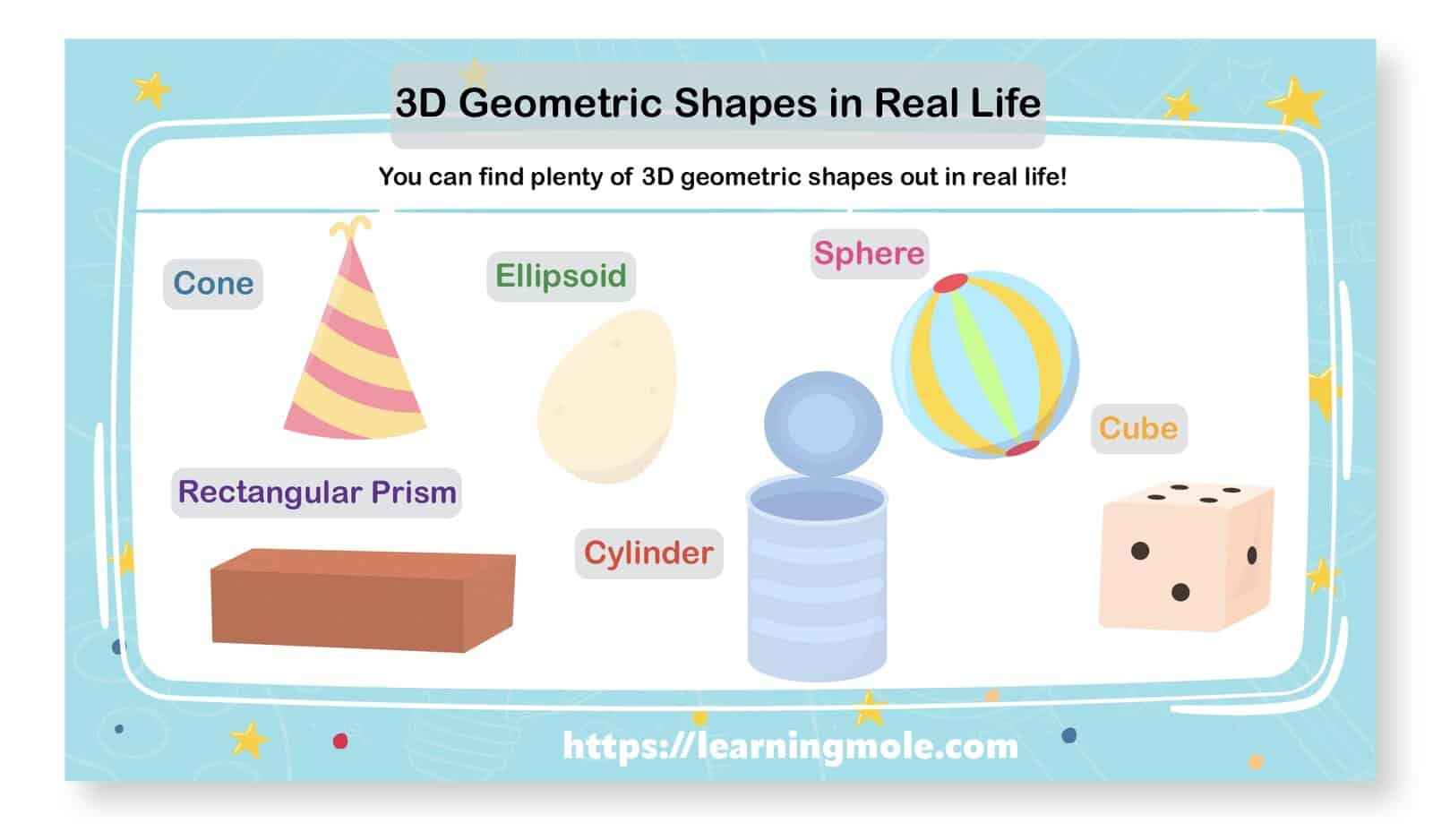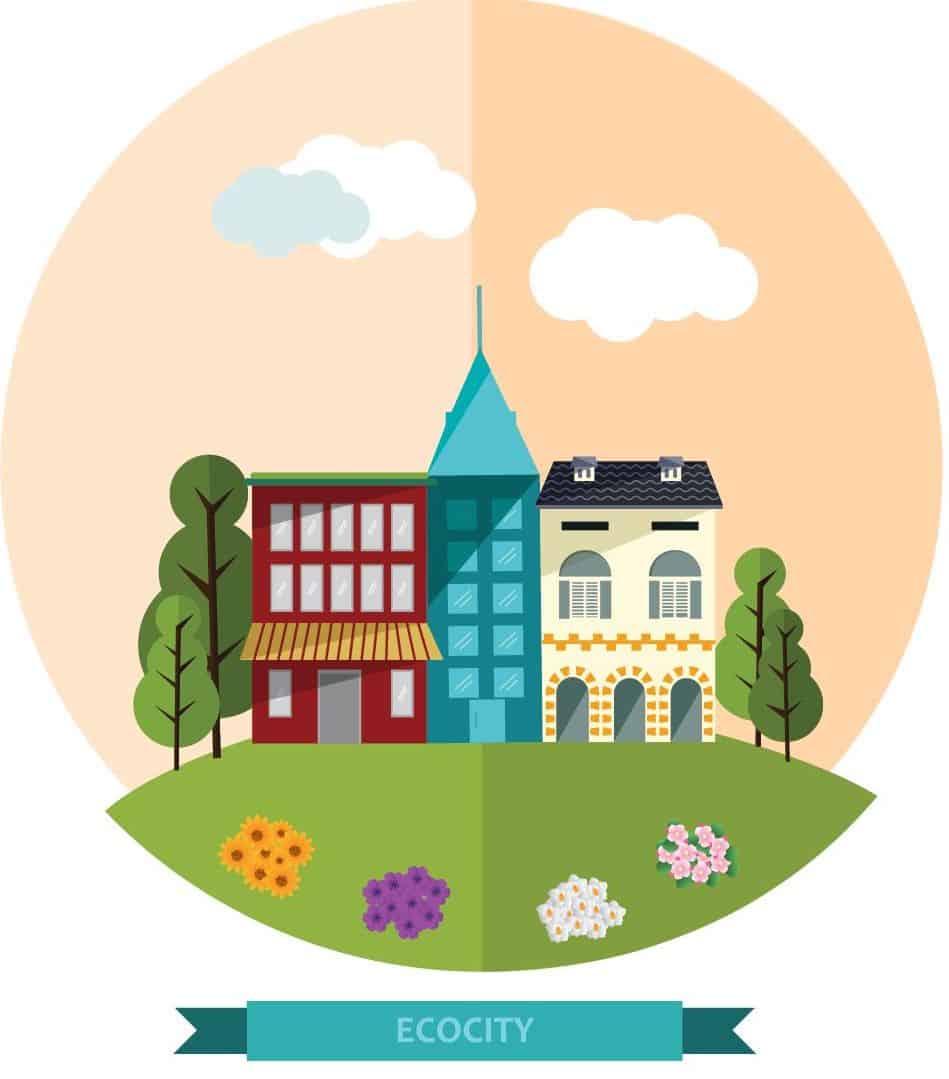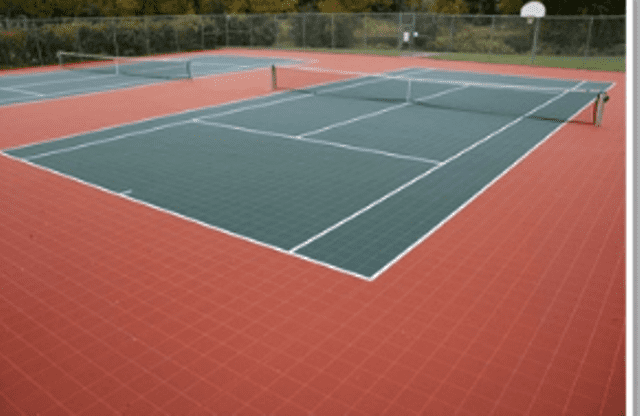
Amazing 11 Geometrical Shapes in real life
Geometry is used in various aspects of daily life like art, architecture, engineering, robotics, astronomy, sculptures, space, nature, sports, machines, cars, and much more.
Table of Contents
Where are the shapes used in real life?

Windows, doors, bed, chairs, TVs, mats, rugs, cushions, etc. have different shapes. Moreover, bedsheets, quilts, covers, mats, and carpets have different geometric patterns on them. Geometry is also important for cooking.
The word” geometry” is derived from the Greek word “geo” and “metron” which mean earth and measurement, respectively. Translating roughly to “earth’s measurement,” geometry is primarily concerned with the characteristics of figures as well as shapes.
It also helps us decide what materials to use, what designs to make, and also plays a vital role in the construction process itself. Different houses and buildings are built in different geometric shapes to give a new look as well as to provide proper ventilation inside the house.
Practically, geometry plays a great role in determining the areas, volumes, and lengths. Euclid is considered to be the “father of geometry”. Geometry helps students prepare for the real world.
It also helps students understand more complex mathematical concepts. Geometry allows students to have whole-brain thinking.

How are shapes important in our daily life?
Learning shapes does not only help children to identify and organize visual information, it helps them learn skills in other curriculum areas including reading, math, and science.
Why is it significant for kids to learn shapes?
From octagonal stops, signs, and rectangular doors to triangular roofs and circular wheel shapes. Shapes are everywhere. Learning shapes not only helps children identify and organize visual information, but it also helps them learn skills in other curriculum areas including reading, math, and science.
For example, an early step in understanding numbers and letters is to recognize their shape. Learning shapes also helps children understand other signs and symbols. A fun way to help your child learn shapes is to make a shape hunt game.
What is a shape in real life?
What are 2D shapes with two dimensions, such as width and height? An example of a 2D shape is a rectangle or a circle. 2D shapes are flat and cannot be physically held because they have no depth, a 2D shape is completely flat.
We are surrounded by shapes in real life. From the droplets of rain to the roundness of oranges, there are all possible types of shapes in nature. There are so many more shapes in real life that we miss out on observing because of the hustle-bustle of our daily lives.
These geometric shapes in real life are so wonderful to see. All shapes, both two-dimensional and three-dimensional, are incredibly important in the context of learning math. The basis of geometry is formed by these shapes.
When children learn with the help of examples, they remember it forever. Let’s take a look at some shapes in real life and what we have observed around us:
Hexagon in real life

Hexagons are typically six straight sides of equal length. You may see snowflakes in that pattern. Ice crystals, and the bee house consist of hexagonal cells, all of these and more are common for shapes occurrences of a hexagon in our real life.
Rhombus in real life
The parallelogram whose sides are equal in length is a square or a rhombus. Rhombus can be found in a variety of things around us, such as a kite, windows of a car, a rhombus-shaped earring, the structure of a building, mirrors, and even a section of the baseball field.
It is not a commonly occurring shape in nature; this one is seen in some crystals. But if you observe keenly, you will be able to spot some more!
Square in real life
Four equal straight sides with four right angles form a square. It can be found in the most common shapes, square rubber stamps, and tiles on the floor. Those are all squares that you see around us as examples of squares in real life.
Let us not forget the coasters, the chessboard, and the keys to the laptop you are working on! We find the squares in many things around us in real life.
Triangles in real life
In mathematics, a triangle is known as the most important shape. A triangle is a plane figure, and this plane figure consists of three sides and three angles. Based on the sides and angles, there are various types of triangles.
Some essential types of triangles are scalene triangles, isosceles triangles, right-angled triangles, etc. If we want to make our learning effective, we have to give real-life examples. The reason is that we can learn concepts effectively thanks to real-life examples.
These shapes are incredibly common and easy to apply and use in everyday life. Some objects have a triangle shape. Most of the kids start their day by eating sandwiches or a slice of Pizza, road signs, an arrow, and a triangular ruler.
Traffic signs form the most commonly found examples of triangles in our everyday life. When you give these practical examples of the triangular shape, your kids will never forget it. They will remember the concept of the triangular shape.
Learning shapes helps your child learn to differentiate between objects. To memorize how shapes are different from one another, they’ll learn to pay attention to the little details that distinguish shapes.
Children can learn to recognize and name circles, triangles, squares, rectangles, and ovals in preschool. Using materials such as stickers, cubes, books, and toys, teachers expose children to different shapes and help them analyze 2D and 3D shapes of different sizes and orientations.
Geometry is primarily concerned with the properties of shapes and forms
Humans are drawn to diverse shapes, designs, and colors from birth. The aforementioned can be reinforced by the fact that while buying things in the market, humans are drawn to fabrics with cool patterns, books with attractive covers, sunglasses with unique shapes, jewelry with attractive patterns, and teacups with beautiful shapes.
Moreover, the geometric shapes of different toys play quite a crucial role in the development of cognitive skills in children during the early stages of their development. The nature surrounding humans constitutes the most significant example of geometry in daily life.
If one looks closely, one may find various geometric shapes and patterns in leaves, flowers, stems, roots, bark, and the list goes on. The organization of the human digestive system as a tube within a tube also emphasizes the role of geometry.
Leaves on trees vary in shape, size, and symmetry. Different fruits and vegetables have different geometric shapes; take the example of the orange, it is a ball and after peeling it off, one might notice how the individual slices formed the perfect ball.
Looking closely at the honeycomb, one will see hexagonal patterns arranged side by side. Similarly, examining a snowflake under a microscope will enable the examiner to be a guest of beautiful geometric patterns.
The following interesting example of the role of geometry in nature is formed by the pattern known as “six around one”. Floral displays the “six around one” patterns, also called “closest circle fill,” “hexagonal fill,” and “hexagonal tessellated.”
The most common example of engineering in everyday life is technology. Whether it is robotics, computers, or video games. Engineering is applied to almost all basic concepts.
Computer programmers can work because engineering concepts are always at their disposal. The virtual world of video games is created only because engineering calculations help in designing the complex graphics of video games.
Ray casting, the imaging process, uses a 2D map to simulate the 3D world of video games. Ray casting helps increase processing as the calculations are made for vertical lines on the screen.
Engineering doesn’t even leave a single chance to play an important role in homes, either. Engineering is also the job of cooking. The chef needs to add all the ingredients in exact proportions to make a delicious dish. Also, while organizing a room, every space is used to make the room look more inviting.
The house is made to look more impressive using vases, paintings, and various decorative pieces, which are in different geometric shapes and have different patterns made on them.
Amazing jewelry with captivating patterns, tea mugs with beautiful forms, and what-not! Geometry can be referred to as being “omnipresent.” The construction of buildings or various monuments has a close relationship with engineering.
Before the architectural forms were created, mathematics and engineering helped in establishing the structural scheme of the building. Theories of proportions and symmetries make up the applications of Geometry in Daily Life.
Moreover, the geometrical shapes of different toys play an utterly crucial role in the development of cognitive skills in children during the early stages of their growth. Let’s discuss a summary of the most important examples of geometry, which plays a pivotal role in the daily life of humans.
1. Technology
The most common example of geometry in everyday life is technology. Be it robotics, computers, or video games. Geometry is applied to almost all the underlying concepts.
Computer programmers can work because the concepts of geometry are always at their disposal. The virtual world of video games is created only because geometric computations help in designing the complex graphics of video games.
Ray casting, the process of shooting, employs a 2-D map to stimulate the 3-D world of video games. Ray casting helps in increasing processing as the calculations are carried out for the vertical lines on the screen.
2. Nature
Geometric shapes like spheres, circles, and triangles can be found anywhere, even in nature. Learn about different geometric shapes that occur naturally both inside and outside the house, and examine the difference between plane and spatial geometry.
One of the best examples of geometry in daily life is nature. We can find different geometrical shapes and patterns in leaves, flowers, stems, bark, and so on. A walk in the garden daily will help you discover different 2D and 3D geometrical shapes and symmetries.
The fruits and vegetables consumed by us daily come in different shapes, which act as a great example for children to revise their geometry. One of the finest is seen in a beehive, where bees build their home in the shape of a hexagon.
Which can be seen only through a microscope? Looking closely at a honeycomb, one will see hexagonal patterns arranged randomly. Similarly, examining a snowflake under a microscope will enable the examiner to be the guest of beautiful geometrical patterns.
The next interesting example of the role of geometry in nature is formed by the pattern popularly known as “Six-Around-One.” The flowers exhibit the “six-around-one” patterns, also called “Closest Packing of Circles,” “Hexagonal Packaging,” and “Tessellating Hexagons.” If one looks closely, one might find different geometrical shapes and patterns.
The organization of the human digestive system as a tube within a tube also ascertains the role of geometry. The leaves on the trees are of varying shapes, sizes, and symmetries.
Different fruits and vegetables have different geometrical shapes; take the example of orange, it is a sphere and after peeling it, one might notice how individual slices can form a perfect sphere. The construction of buildings or various monuments has a close relationship with geometry.
3. Homes
Geometry does not leave even a single chance to play a significant role in homes as well. The windows, doors, beds, chairs, tables, TVs, mats, rugs, cushions, etc. have different shapes. Moreover, bedsheets, quilts, covers, mats, and carpets have different geometric patterns on them. Geometry is also significant in cooking.

The chef needs to add all the ingredients in accurate proportions and ratios to put forth a delicious dish. Moreover, while organizing a room, every space is utilized to make the room look more appealing.
A house is made to look more presentable by using vases, paintings, and various decorative pieces, which are of different geometric shapes and have different patterns made on them.
4. Architecture
The construction of various buildings or monuments has a close relationship with geometry. Before constructing architectural forms, mathematics, and geometry help put forth the structural blueprint of the building.
The theories of proportions and symmetries shape the fixed aspects of all kinds of architectural designs. Pythagoras’ “Principles of Harmony” along with geometry were employed in the architectural designs of the sixth century BC.
Not only were the basics of mathematics coupled with geometrical help in increasing the aesthetics, harmony, and religious value of large structures, but also it was aided in mitigating various hazards resulting from high-speed winds. Moreover, the staircase in all the buildings takes into consideration the angles of geometry.
5. Arts
What does art include? Art encompasses the formation of figures & shapes, a basic understanding of 2-D & 3-D, knowledge about spatial concepts, and contribution of estimation, patterns & measurement.
From the aforesaid, it is evident that there is a close relationship between art and geometry. The formation of shapes is a result of the use of geometrical forms like circles, triangles, squares, Mandela, or octagons.
Moreover, the contents of paintings or sculptures are largely affected by the choice and shape of frames. Not forgetting that the principles of projective geometry form the basis of perspective, which is used in most of the paintings.
6. Sports
Sports often do not fail a chance to use geometrical concepts. The buildings of the sports stadiums and athletic fields take into consideration geometric shapes.

The athletic fields also employ geometry; hockey, soccer, basketball, and football fields are rectangular. The corner kick spots, goal posts, arcs, D-section, and center circle are marked on the field.
Similarly, the pitches of various other sports like volleyball and basketball take into consideration the geometrical aspects because these pitches have oval, as well as circular arcs, marked clearly. Talking of track field, semicircular shapes are typically noticeable.
Angles also play a critical role in predicting the movement of the players, enhancing their performance, and scoring a point.
7. Designing
Geometry is widely applied in the field of design; the creation of animated figures in video games requires geometry. About art, almost every element of design is entwined with geometric proportions, which are used to depict a story.
Taking the examples of miniature paintings and manuscript illumination, geometric principles are employed to compose the layout. Strict geometric proportions are paid attention to while forming individual letters in calligraphy.
In designing, geometry has a symbolic role to play; as evident from the carvings on the walls, roofs, and doors of various architectural marvels.
8. Computer-aided design-CAD
Geometry, one of the principal concepts of mathematics, entails lines, curves, shapes, and angles. Before any architectural design is made, computer software helps in rendering visual images on the screen. CAD, software, puts forth the blueprint of the design.
Moreover, it also aids in the simulation of the architectural forms, which allows for a better understanding of the finished product. The principles of geometry are being used extensively in various industrial processes, which allow the designing of graphics.
9. Mapping
Geometry helps in the accurate calculation of physical distances. It is employed in the field of astronomy to map the distances between stars & planets and between different planets. It also aids in the determination of a relationship between the movements of different bodies in the celestial environment.
Apart from mapping celestial bodies, geometry also plays a vital role in surveying and navigation. Concerning surveying, measurement of the area of land is a result of the accurate determination of the shape of the land. Moreover, in navigation, ships, watercraft, and aircraft utilize angles and also depend on other mathematical concepts for carrying out basic operations.
10. Medicine
Techniques like x-rays, ultrasounds, MRIs, and nuclear imaging require the reconstruction of shapes of organs, and bones. They are based on geometry only. Physiotherapy also employs geometry.
Geometric properties and features help in defining the image in digital grids. The geometrical concepts not only aid in visualization, manipulation, image segmentation, correction, and object representation, but also play an important role in increasing stability, fidelity, and efficiency. Bisecting angle techniques and parallel techniques are crucial in radiology.
11. Geographic information systems
The GPS of the satellites uses geometrical principles to calculate the position of the satellites. The use of coordinate geometry in the Global Positioning System (GPS) provides precise information about the location and time.
GPS employers coordinate to calculate the distance between any two places. The coordinate geometry helps GPS to track transportation accidents and carry out rescue operations. Coordinating geometry also aids in enhancing flight security weather forecasting, earthquake monitoring, and environmental protection. Moreover, various facets of military operations are equipped with GPS.
Explore the previous examples and facts, and you will find yourself getting the necessary knowledge and information to fully grasp the concept of Geometrical Shapes in daily life. So, keep on visiting our Learning Mole to get more knowledge and information.


Leave a Reply